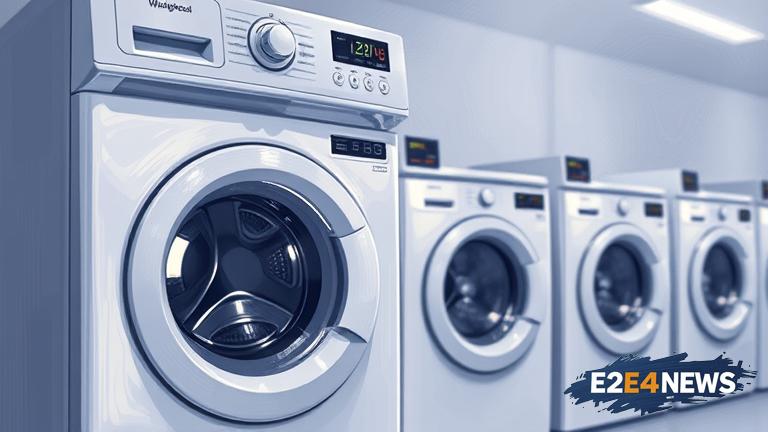Whirlpool, a leading home appliance manufacturer, has seen its stock price plummet in recent times, sparking concern among investors. The company’s financial performance has been under scrutiny, with various factors contributing to the decline. One major reason is the rising cost of raw materials, which has put pressure on Whirlpool’s profit margins. The increasing prices of steel, aluminum, and other essential materials have forced the company to absorb higher costs, ultimately affecting its bottom line. Additionally, the ongoing trade tensions and tariffs imposed by the US government have further exacerbated the situation. The tariffs on imported goods, including appliances, have led to higher production costs and reduced demand. Whirlpool’s reliance on international trade has made it vulnerable to these fluctuations. Furthermore, the company’s efforts to expand its product portfolio and invest in new technologies have resulted in significant research and development expenses. While these investments are expected to yield long-term benefits, they have put a strain on the company’s current financials. The home appliance market is also becoming increasingly competitive, with new entrants and established players vying for market share. Whirlpool faces stiff competition from brands like Samsung, LG, and GE Appliances, which have been aggressively expanding their product lines and improving their market presence. The company’s pricing strategy has also been called into question, with some critics arguing that its products are overpriced compared to those of its competitors. Whirlpool’s response to these challenges has been to focus on innovation and customer experience, with a emphasis on smart home appliances and energy-efficient products. However, the transition to these new technologies has been slower than expected, and the company is still facing significant challenges in terms of adoption and market penetration. Despite these challenges, Whirlpool remains a leading player in the home appliance market, with a strong brand reputation and a loyal customer base. The company’s commitment to quality and customer satisfaction has earned it numerous awards and recognition. Whirlpool’s global presence, with operations in over 170 countries, also provides a significant advantage in terms of market reach and diversification. However, the company’s dependence on international trade and its exposure to currency fluctuations and economic uncertainty pose significant risks. In recent years, Whirlpool has been working to reduce its debt and improve its financial flexibility, but the current market conditions have made it challenging to achieve these goals. The company’s stock price has been volatile, with significant fluctuations in response to earnings reports and market trends. Investors are closely watching Whirlpool’s progress, as the company navigates these challenges and works to restore its financial health. While the short-term outlook may be uncertain, Whirlpool’s long-term prospects remain promising, driven by its commitment to innovation, customer satisfaction, and global expansion. The company’s ability to adapt to changing market conditions and respond to emerging trends will be crucial in determining its future success. As the home appliance market continues to evolve, Whirlpool must stay ahead of the curve, investing in new technologies and improving its operational efficiency to remain competitive. With its strong brand and global presence, Whirlpool is well-positioned to capitalize on emerging opportunities and drive growth in the years to come.
